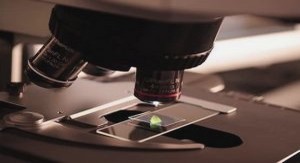Les effets de différentes proportions de matières organiques, de plantes
et de vers de terre sur les agrégations
Parent materials
In this study, constructed Technosols consisted of a binary mixture of a mineral and an organic material, both provided by ECT company (Villeneuve-sous-Dammartin, France). The mineral material was excavated from a deep C horizon (Excavated Deep Horizon, EDH) of different quarries (different types of Eocene to Oligocene limestone of the Paris Basin) collected in the Ile-de-France region (France). EDH is a coarse-textured soil (2% clay, 10% silt and 88% sand) highly carbonated (43.1±0.1%) and poor in organic carbon (0.38±0.02%) 143 and nitrogen (0.03±0.01%). X-ray diffraction performed with a Siemens D500 diffractometer (Cu-Ka, 40 kV, 30 mA) showed that EDH minerals were manly composed of calcite, dolomite and quartz.
The organic material used in the mixture was a Green Waste Compost (GWC) that contains 21 % of organic carbon and 1.4% of nitrogen. EDH and GWC both have pHWater of 8.3 and 7.9, respectively. Cation-exchange capacity (NF X 31-130) was low for EDH (3.12±0.03 cmol+ kg-1 ), but high for GWC (42.3±0.2 cmol+ kg-1 ). The particle density measured with a pycnometer was relatively high for both material EDH (2.75 ± 0.2 g cm-3 ) and for GWC (2.06 ± 0.1 g cm-3 ). Finally, the bulk densities measured by the plastic bag method (Boivin et al., 1990) were 1.33± 0.04 g cm-3 and 0.61± 0.02 g cm-3 , respectively for EDH and GWC.
Experimental setup
To construct the Technosols, EDH and GWC were first air-dried and sieved at 4 mm. EDH and GWC were then mixed using a concrete mixer for ten minutes to prepare six different mixtures with specific volumetric percentages of GWC at 0%, 10%, 20%, 30%, 40% and 50%. One liter of each mixture was placed in a mesocosm of 13×13×12.5 cm with full capacity of 1.2 L. Each mixture of GWC was combined with four treatments: a control without organisms (C), a treatment with two individuals (0.5 ± 0.1 g each) of the endogeic earthworm species Aporrectodea caliginosa (E), a treatment with Lolium perenne plants (50 seeds with a 80% germination rate scattered homogeneously on the mesocosm surface) (P), and a treatment with both earthworms and plants (EP). Plants were sown 24 hours and earthworms were introduced 48 hours after watering the pots. A total of 96 mesocosms were divided into 24 treatments, each with four replicates. The choice of Lolium perenne was made for several reasons.
First, it is interesting from an economical point of view, since it grows fast in a wide range of soils types, even with low 144 organic matter content (Bugnon P, 1912) or basic pH. Additionally, it provides a high nutritional potential (Tayler, 1984) and is a very competitive species. It is characterized by a dense adventive root system that generates a consequent volume of rhizospheric soil, thus limiting erosion (Hannaway et al., 1999) which is a common issue for Technosols. The earthworm Aporrectodea caliginosa was selected because it eats dead roots, but also the microflora and mesofauna that came along with its main food source (Curry and Schmidt, 2007), which helps to create the organo-mineral content that is in general originally missing in Technosols. It’s also a species that can live in a wide variety of soils, rich or poor, including those found around Paris. This combination of earthworms and plants, both being able to live in poor organic matter soils, allows the comparison between mixtures with different percentages of GWC.



